

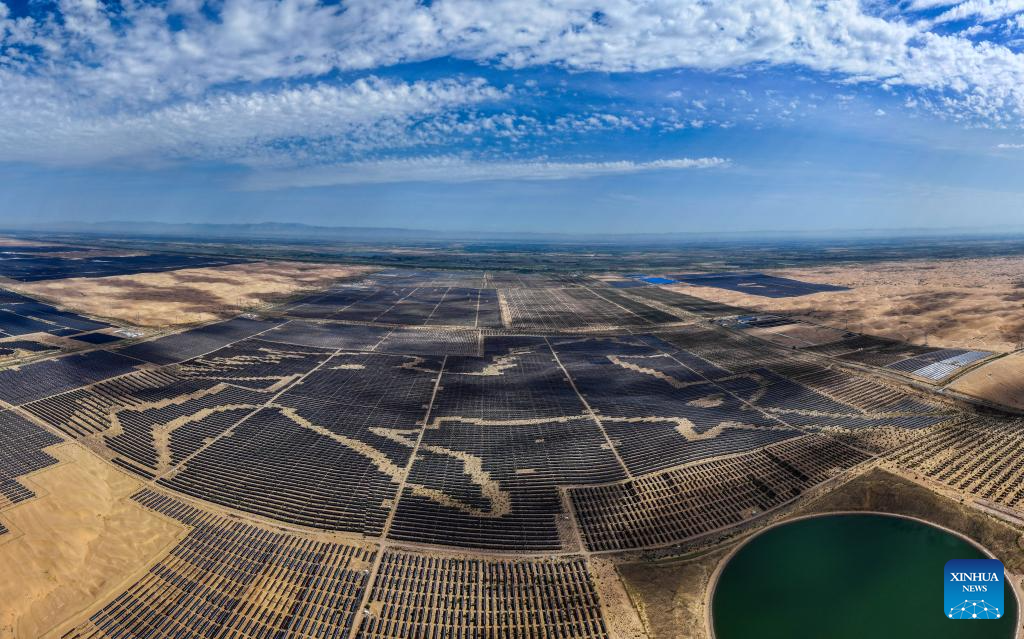
An aerial drone photo taken on June 7, 2025 shows a photovoltaic project in Kubuqi Desert in north China's Inner Mongolia Autonomous Region. In recent years, Inner Mongolia has made all-out efforts to tackle the ecological challenges in the areas along the Yellow River, and has treated land covering a total of 14.89 million mu (about 992,667 hectares).
In deserts of Kubuqi and Ulan Buh, the sand control model with photovoltaic projects has been widely implemented, transforming stretches of sandy terrain into vast "blue seas" brimming with green energy. (Xinhua/Lian Zhen)
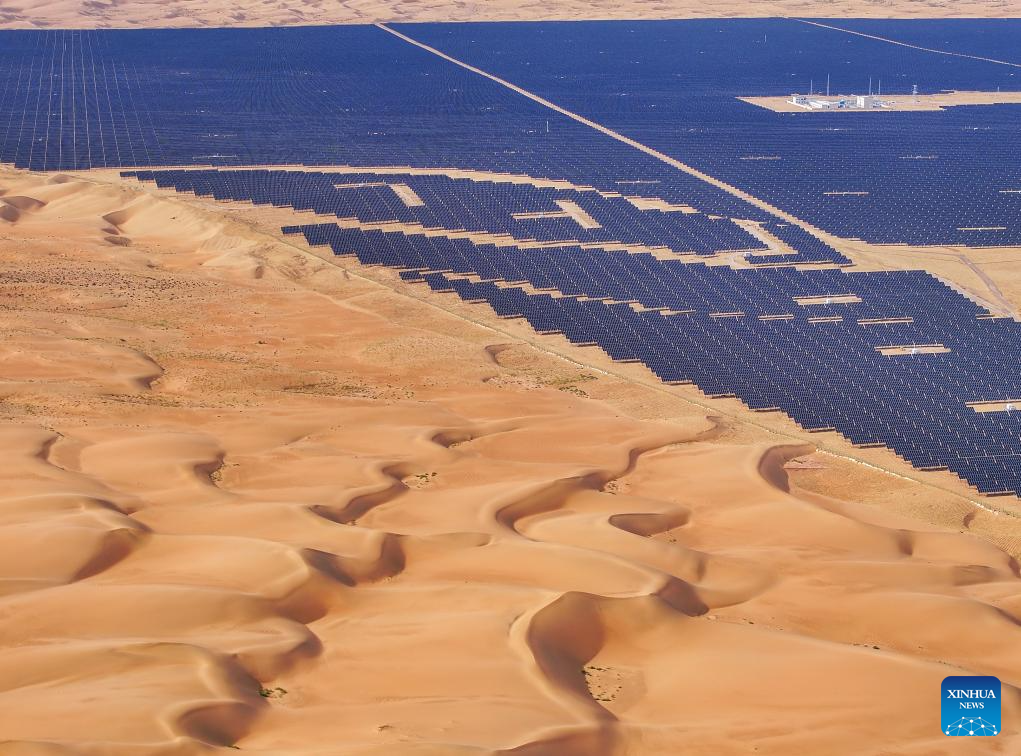
An aerial drone photo taken on June 5, 2025 shows a photovoltaic project in Ulan Buh Desert, in Dengkou County of Bayannur, north China's Inner Mongolia Autonomous Region. In recent years, Inner Mongolia has made all-out efforts to tackle the ecological challenges in the areas along the Yellow River, and has treated land covering a total of 14.89 million mu (about 992,667 hectares).
In deserts of Kubuqi and Ulan Buh, the sand control model with photovoltaic projects has been widely implemented, transforming stretches of sandy terrain into vast "blue seas" brimming with green energy. (Xinhua/Lian Zhen)
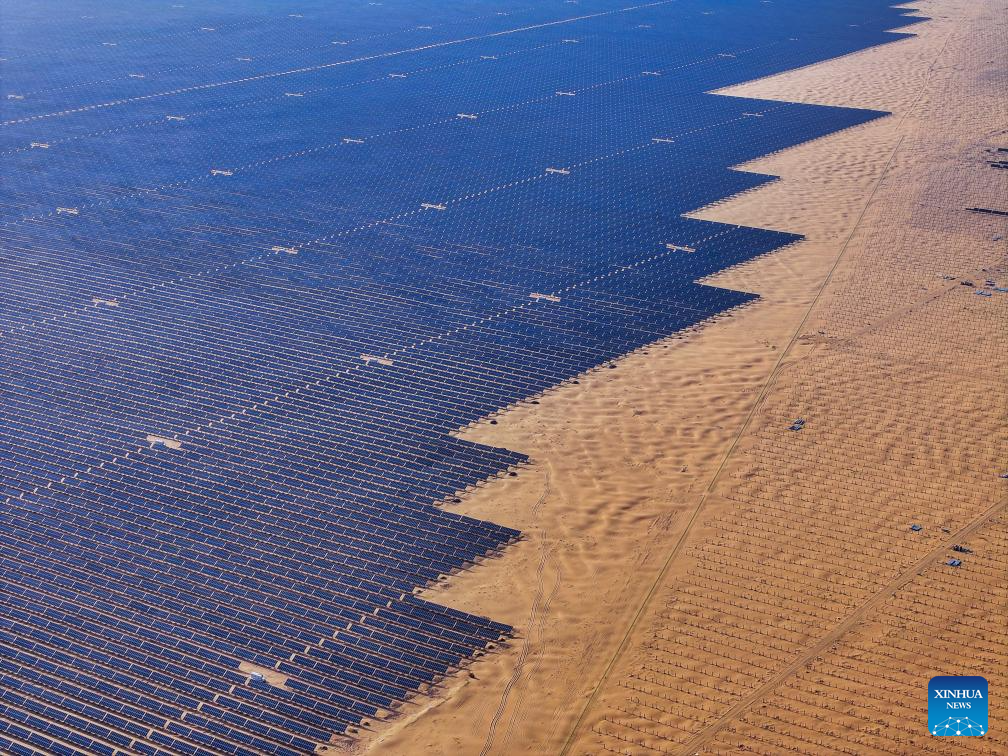
An aerial drone photo taken on June 6, 2025 shows a photovoltaic project in Kubuqi Desert, north China's Inner Mongolia Autonomous Region. In recent years, Inner Mongolia has made all-out efforts to tackle the ecological challenges in the areas along the Yellow River, and has treated land covering a total of 14.89 million mu (about 992,667 hectares).
In deserts of Kubuqi and Ulan Buh, the sand control model with photovoltaic projects has been widely implemented, transforming stretches of sandy terrain into vast "blue seas" brimming with green energy. (Xinhua/Lian Zhen)

A worker installs photovoltaic panels at a photovoltaic project in Kubuqi Desert, north China's Inner Mongolia Autonomous Region, June 6, 2025. In recent years, Inner Mongolia has made all-out efforts to tackle the ecological challenges in the areas along the Yellow River, and has treated land covering a total of 14.89 million mu (about 992,667 hectares).
In deserts of Kubuqi and Ulan Buh, the sand control model with photovoltaic projects has been widely implemented, transforming stretches of sandy terrain into vast "blue seas" brimming with green energy. (Xinhua/Li Zhipeng)
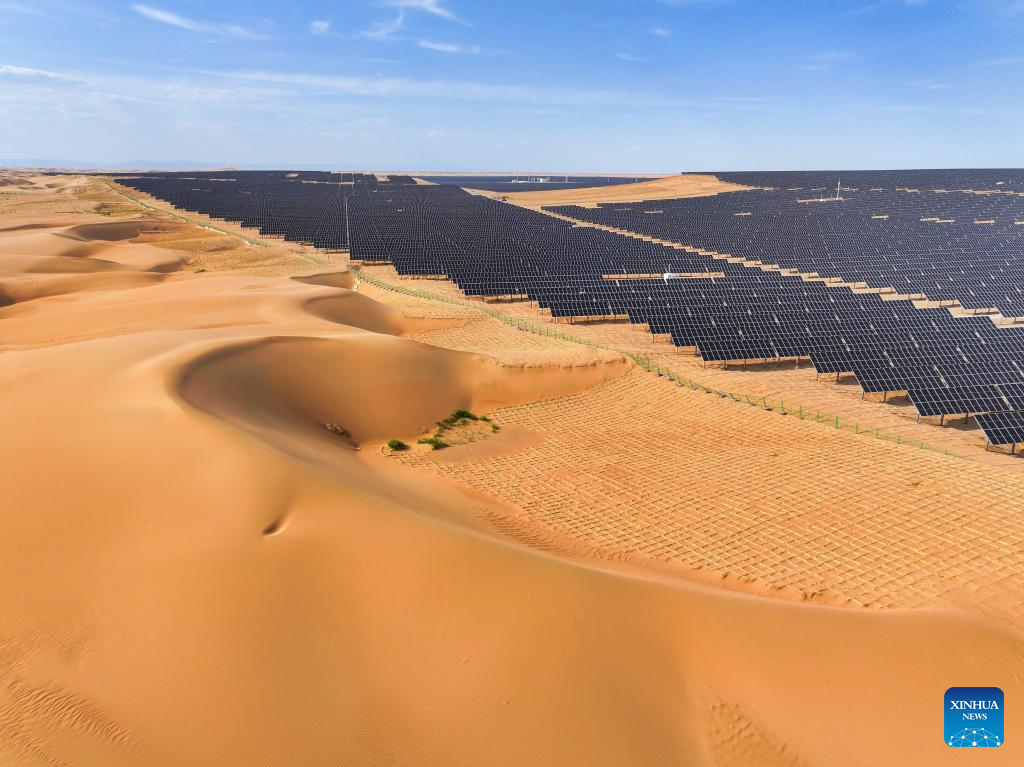
An aerial drone photo taken on June 5, 2025 shows a photovoltaic project in Ulan Buh Desert, in Dengkou County of Bayannur, north China's Inner Mongolia Autonomous Region. In recent years, Inner Mongolia has made all-out efforts to tackle the ecological challenges in the areas along the Yellow River, and has treated land covering a total of 14.89 million mu (about 992,667 hectares).
In deserts of Kubuqi and Ulan Buh, the sand control model with photovoltaic projects has been widely implemented, transforming stretches of sandy terrain into vast "blue seas" brimming with green energy. (Xinhua/Lian Zhen)

An aerial drone photo taken on June 5, 2025 shows an integrated sand control and photovoltaic project at a state forestry area in the edge of Ulan Buh Desert in Linhe District of Bayannur, north China's Inner Mongolia Autonomous Region. In recent years, Inner Mongolia has made all-out efforts to tackle the ecological challenges in the areas along the Yellow River, and has treated land covering a total of 14.89 million mu (about 992,667 hectares).
In deserts of Kubuqi and Ulan Buh, the sand control model with photovoltaic projects has been widely implemented, transforming stretches of sandy terrain into vast "blue seas" brimming with green energy. (Xinhua/Li Zhipeng)
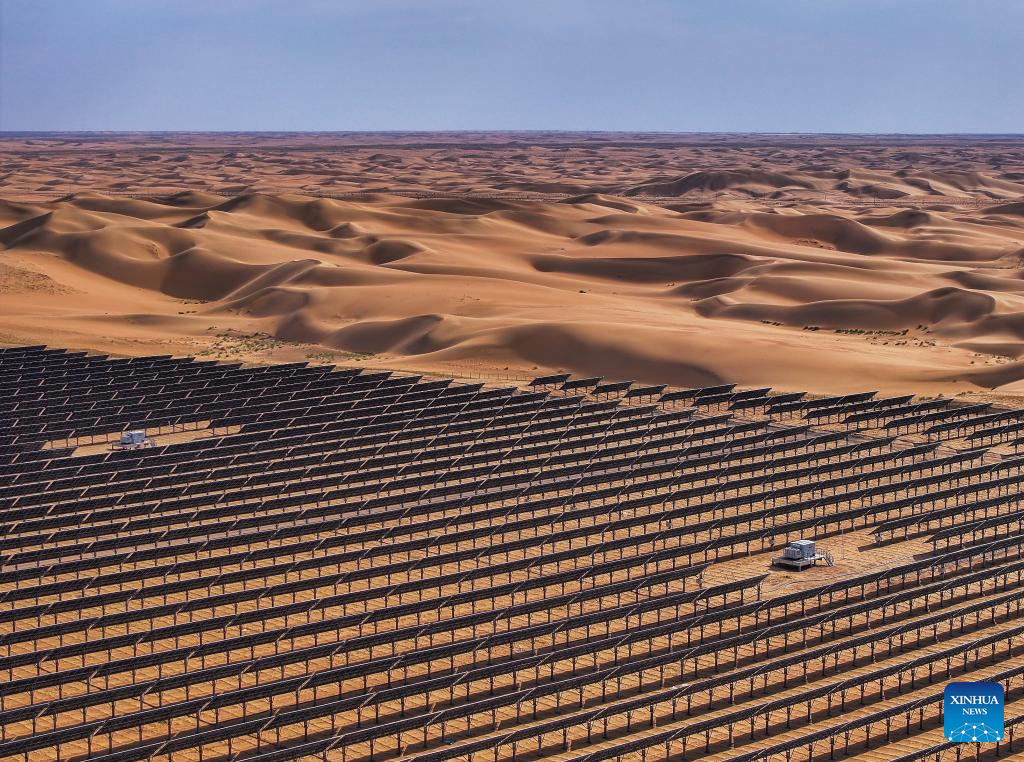
An aerial drone photo taken on June 5, 2025 shows a photovoltaic project in Ulan Buh Desert, in Dengkou County of Bayannur, north China's Inner Mongolia Autonomous Region. In recent years, Inner Mongolia has made all-out efforts to tackle the ecological challenges in the areas along the Yellow River, and has treated land covering a total of 14.89 million mu (about 992,667 hectares).
In deserts of Kubuqi and Ulan Buh, the sand control model with photovoltaic projects has been widely implemented, transforming stretches of sandy terrain into vast "blue seas" brimming with green energy. (Xinhua/Lian Zhen)
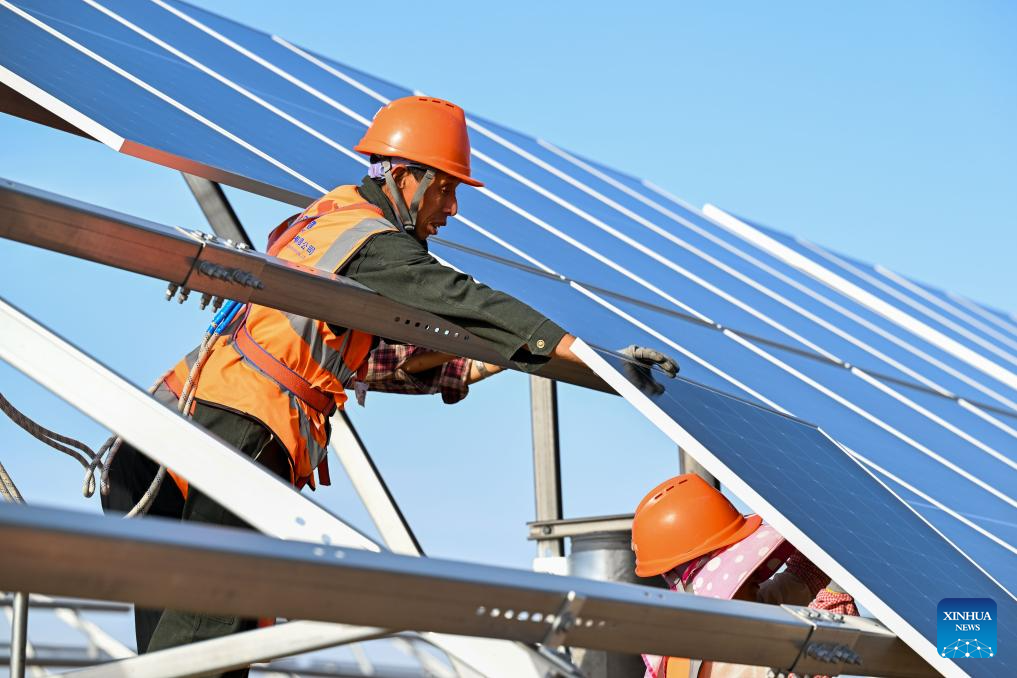
Workers install photovoltaic panels at a photovoltaic project in Kubuqi Desert, north China's Inner Mongolia Autonomous Region, June 6, 2025. In recent years, Inner Mongolia has made all-out efforts to tackle the ecological challenges in the areas along the Yellow River, and has treated land covering a total of 14.89 million mu (about 992,667 hectares).
In deserts of Kubuqi and Ulan Buh, the sand control model with photovoltaic projects has been widely implemented, transforming stretches of sandy terrain into vast "blue seas" brimming with green energy. (Xinhua/Li Zhipeng)

An aerial drone photo taken on June 5, 2025 shows an integrated sand control and photovoltaic project at a state forestry area in the edge of Ulan Buh Desert in Linhe District of Bayannur, north China's Inner Mongolia Autonomous Region. In recent years, Inner Mongolia has made all-out efforts to tackle the ecological challenges in the areas along the Yellow River, and has treated land covering a total of 14.89 million mu (about 992,667 hectares).
In deserts of Kubuqi and Ulan Buh, the sand control model with photovoltaic projects has been widely implemented, transforming stretches of sandy terrain into vast "blue seas" brimming with green energy. (Xinhua/Lian Zhen)

Seeds of desert plants are pictured at an integrated sand control and photovoltaic project at a state forestry area in the edge of Ulan Buh Desert in Linhe District of Bayannur, north China's Inner Mongolia Autonomous Region, June 5, 2025. In recent years, Inner Mongolia has made all-out efforts to tackle the ecological challenges in the areas along the Yellow River, and has treated land covering a total of 14.89 million mu (about 992,667 hectares).
In deserts of Kubuqi and Ulan Buh, the sand control model with photovoltaic projects has been widely implemented, transforming stretches of sandy terrain into vast "blue seas" brimming with green energy. (Xinhua/Gao Wei)
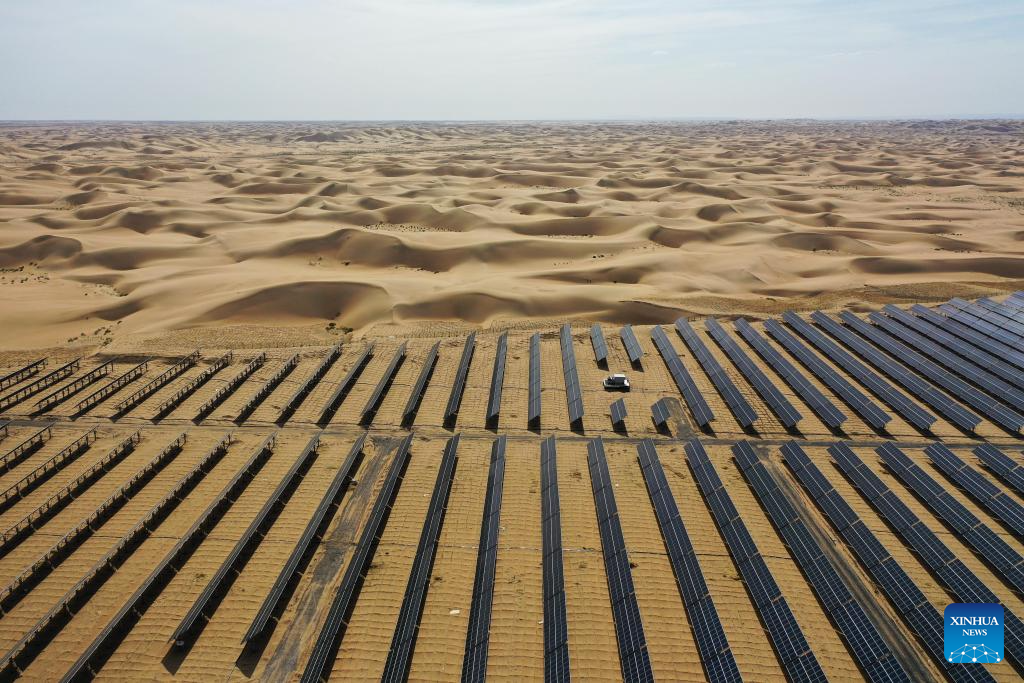
An aerial drone photo taken on June 5, 2025 shows a photovoltaic project in Ulan Buh Desert, in Dengkou County of Bayannur, north China's Inner Mongolia Autonomous Region. In recent years, Inner Mongolia has made all-out efforts to tackle the ecological challenges in the areas along the Yellow River, and has treated land covering a total of 14.89 million mu (about 992,667 hectares).
In deserts of Kubuqi and Ulan Buh, the sand control model with photovoltaic projects has been widely implemented, transforming stretches of sandy terrain into vast "blue seas" brimming with green energy. (Xinhua/Li Zhipeng)
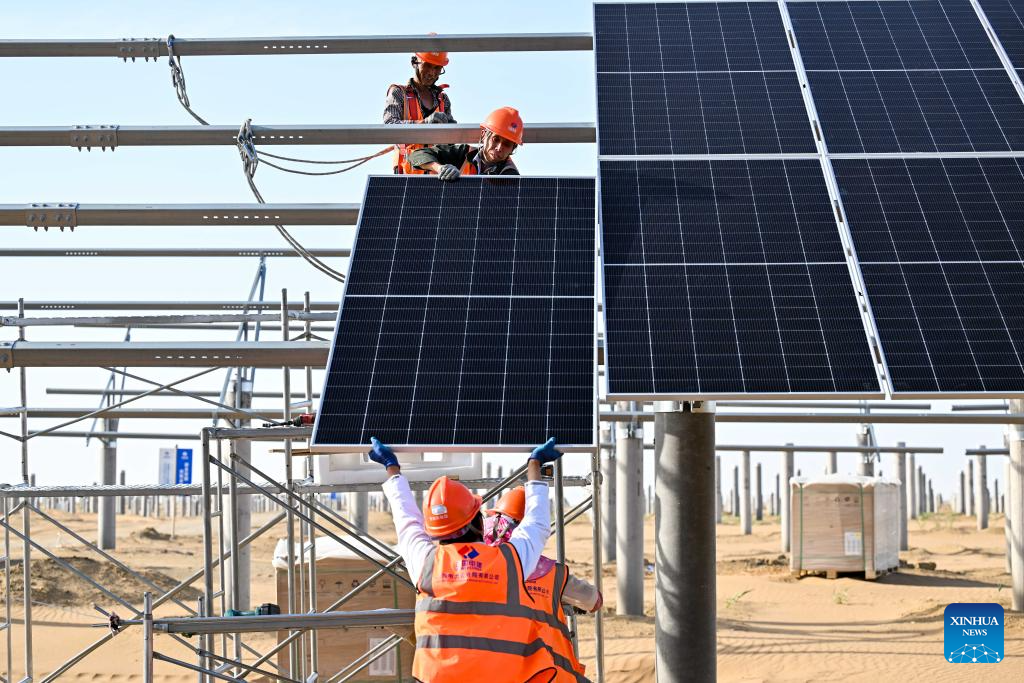
Workers install photovoltaic panels at a photovoltaic project in Kubuqi Desert, north China's Inner Mongolia Autonomous Region, June 6, 2025. In recent years, Inner Mongolia has made all-out efforts to tackle the ecological challenges in the areas along the Yellow River, and has treated land covering a total of 14.89 million mu (about 992,667 hectares).
In deserts of Kubuqi and Ulan Buh, the sand control model with photovoltaic projects has been widely implemented, transforming stretches of sandy terrain into vast "blue seas" brimming with green energy. (Xinhua/Li Zhipeng)
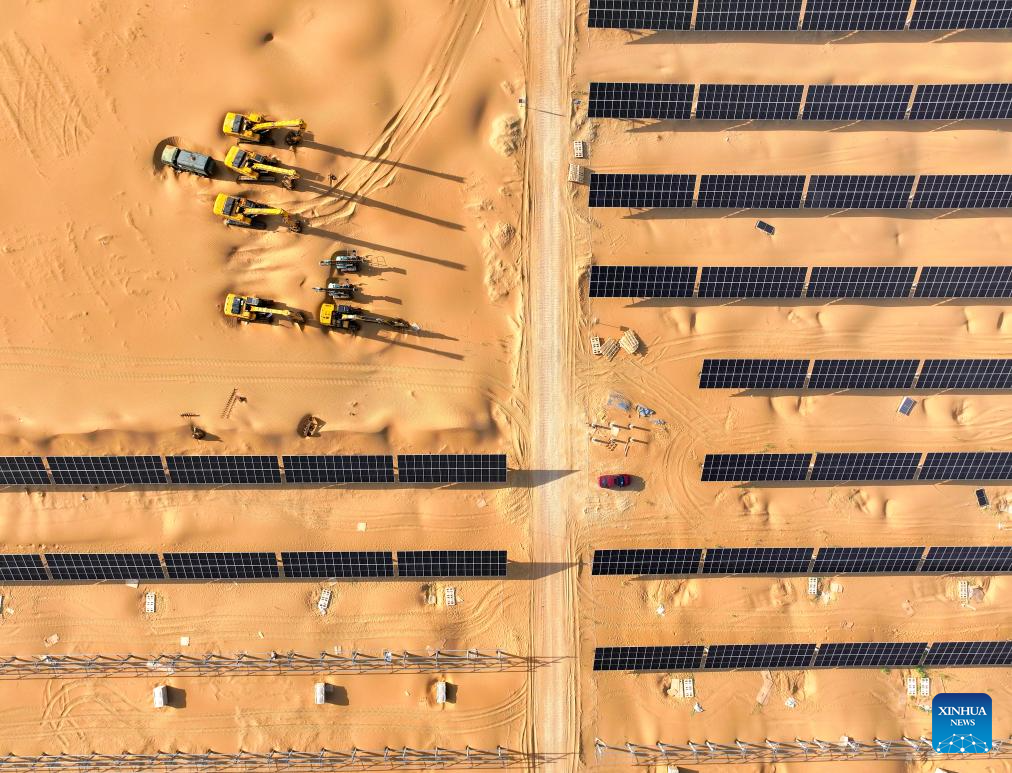
An aerial drone photo taken on June 6, 2025 shows a photovoltaic project in Kubuqi Desert, north China's Inner Mongolia Autonomous Region. In recent years, Inner Mongolia has made all-out efforts to tackle the ecological challenges in the areas along the Yellow River, and has treated land covering a total of 14.89 million mu (about 992,667 hectares).
In deserts of Kubuqi and Ulan Buh, the sand control model with photovoltaic projects has been widely implemented, transforming stretches of sandy terrain into vast "blue seas" brimming with green energy. (Xinhua/Lian Zhen)
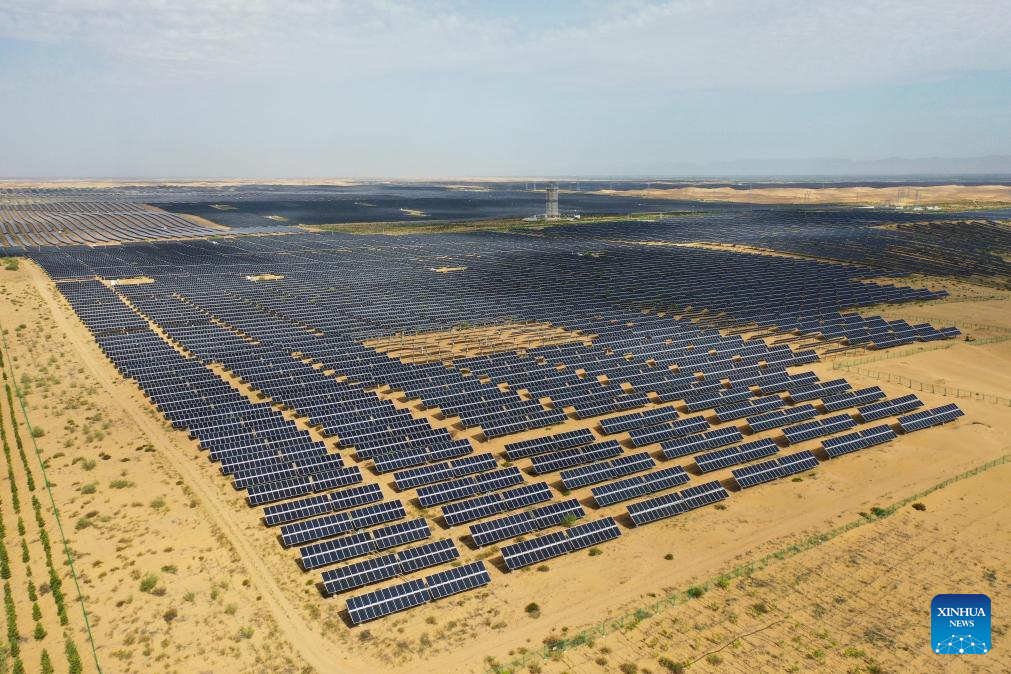
An aerial drone photo taken on June 7, 2025 shows a photovoltaic project in Kubuqi Desert in north China's Inner Mongolia Autonomous Region. In recent years, Inner Mongolia has made all-out efforts to tackle the ecological challenges in the areas along the Yellow River, and has treated land covering a total of 14.89 million mu (about 992,667 hectares).
In deserts of Kubuqi and Ulan Buh, the sand control model with photovoltaic projects has been widely implemented, transforming stretches of sandy terrain into vast "blue seas" brimming with green energy. (Xinhua/Li Zhipeng)
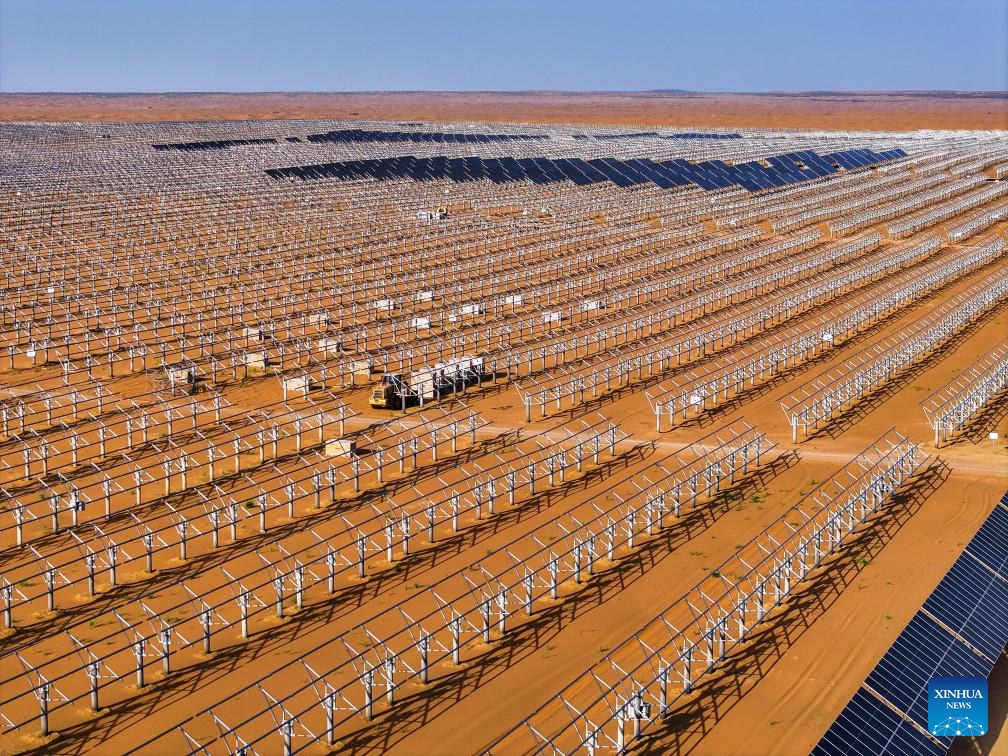
An aerial drone photo taken on June 6, 2025 shows a photovoltaic project in Kubuqi Desert, north China's Inner Mongolia Autonomous Region. In recent years, Inner Mongolia has made all-out efforts to tackle the ecological challenges in the areas along the Yellow River, and has treated land covering a total of 14.89 million mu (about 992,667 hectares).
In deserts of Kubuqi and Ulan Buh, the sand control model with photovoltaic projects has been widely implemented, transforming stretches of sandy terrain into vast "blue seas" brimming with green energy. (Xinhua/Lian Zhen)
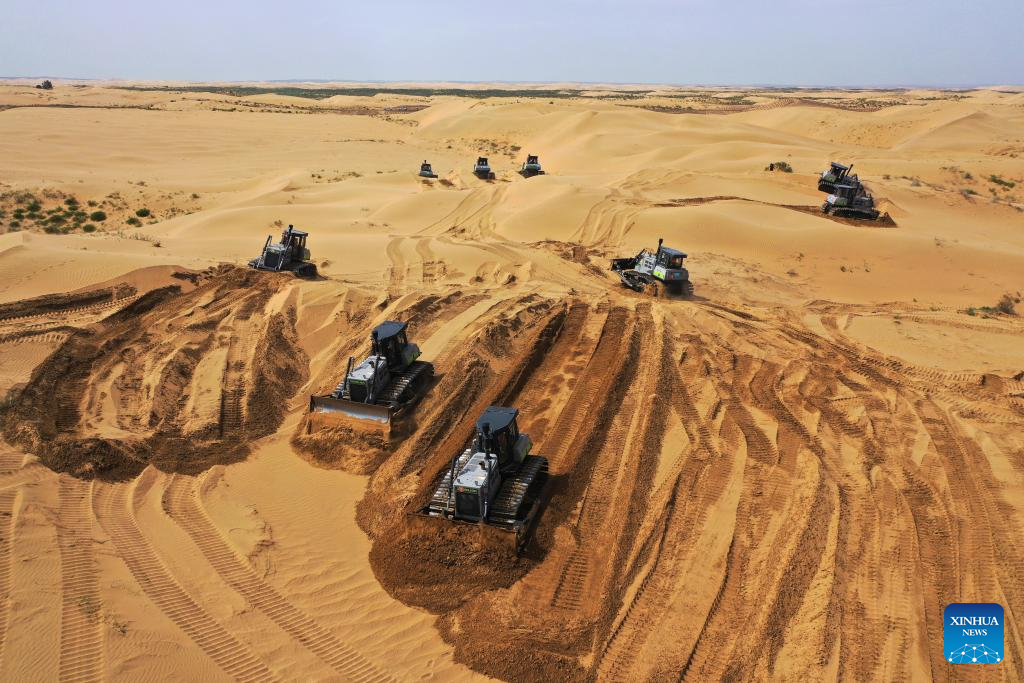
An aerial drone photo taken on June 7, 2025 shows machineries leveling sandy land for the construction of a photovoltaic project in Kubuqi Desert in Dalad Banner of north China's Inner Mongolia Autonomous Region. In recent years, Inner Mongolia has made all-out efforts to tackle the ecological challenges in the areas along the Yellow River, and has treated land covering a total of 14.89 million mu (about 992,667 hectares).
In deserts of Kubuqi and Ulan Buh, the sand control model with photovoltaic projects has been widely implemented, transforming stretches of sandy terrain into vast "blue seas" brimming with green energy. (Xinhua/Li Zhipeng)
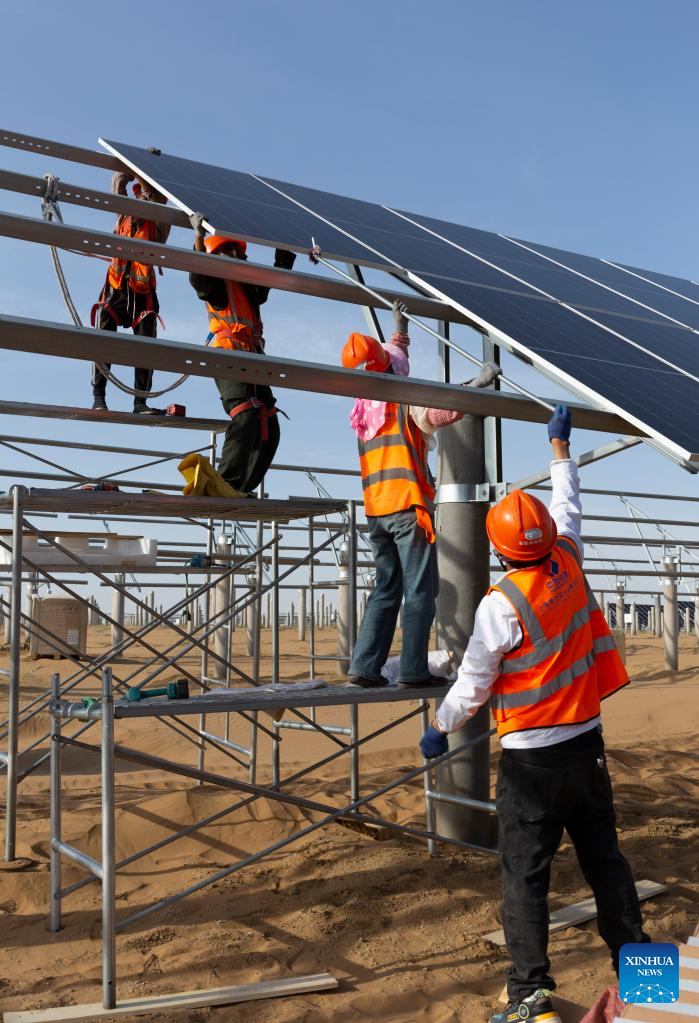
Workers install photovoltaic panels at a photovoltaic project in Kubuqi Desert, north China's Inner Mongolia Autonomous Region, June 6, 2025. In recent years, Inner Mongolia has made all-out efforts to tackle the ecological challenges in the areas along the Yellow River, and has treated land covering a total of 14.89 million mu (about 992,667 hectares).
In deserts of Kubuqi and Ulan Buh, the sand control model with photovoltaic projects has been widely implemented, transforming stretches of sandy terrain into vast "blue seas" brimming with green energy. (Xinhua/Gao Wei)
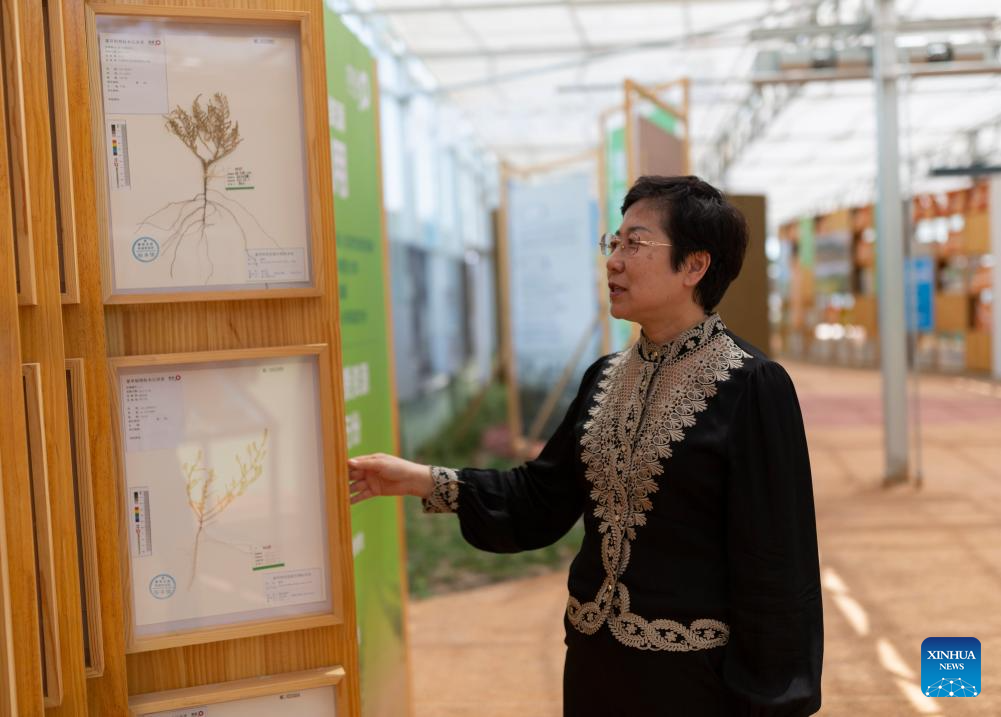
A staff member introduces desert plant specimens at an integrated sand control and photovoltaic project at a state forestry area in the edge of Ulan Buh Desert in Linhe District of Bayannur, north China's Inner Mongolia Autonomous Region, June 5, 2025. In recent years, Inner Mongolia has made all-out efforts to tackle the ecological challenges in the areas along the Yellow River, and has treated land covering a total of 14.89 million mu (about 992,667 hectares).
In deserts of Kubuqi and Ulan Buh, the sand control model with photovoltaic projects has been widely implemented, transforming stretches of sandy terrain into vast "blue seas" brimming with green energy. (Xinhua/Gao Wei)

Workers install photovoltaic panels at a photovoltaic project in Kubuqi Desert, north China's Inner Mongolia Autonomous Region, June 6, 2025. In recent years, Inner Mongolia has made all-out efforts to tackle the ecological challenges in the areas along the Yellow River, and has treated land covering a total of 14.89 million mu (about 992,667 hectares).
In deserts of Kubuqi and Ulan Buh, the sand control model with photovoltaic projects has been widely implemented, transforming stretches of sandy terrain into vast "blue seas" brimming with green energy. (Xinhua/Gao Wei)

An aerial drone photo taken on June 5, 2025 shows an integrated sand control and photovoltaic project at a state forestry area in the edge of Ulan Buh Desert in Linhe District of Bayannur, north China's Inner Mongolia Autonomous Region. In recent years, Inner Mongolia has made all-out efforts to tackle the ecological challenges in the areas along the Yellow River, and has treated land covering a total of 14.89 million mu (about 992,667 hectares).
In deserts of Kubuqi and Ulan Buh, the sand control model with photovoltaic projects has been widely implemented, transforming stretches of sandy terrain into vast "blue seas" brimming with green energy. (Xinhua/Lian Zhen)
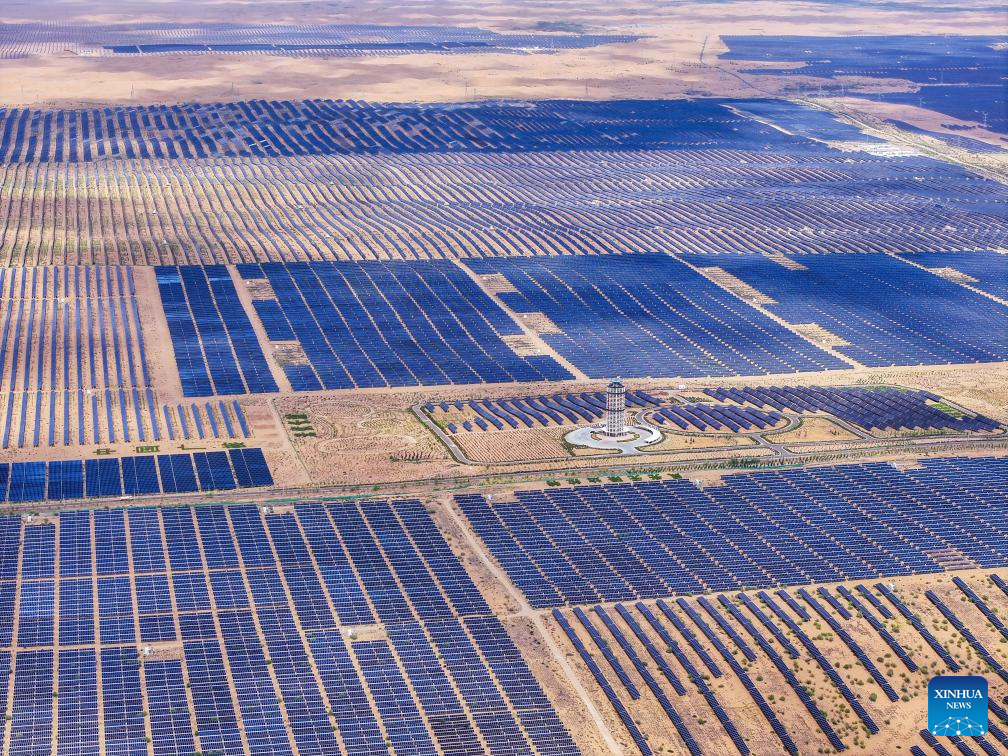
An aerial drone photo taken on June 7, 2025 shows a photovoltaic project in Kubuqi Desert in north China's Inner Mongolia Autonomous Region. In recent years, Inner Mongolia has made all-out efforts to tackle the ecological challenges in the areas along the Yellow River, and has treated land covering a total of 14.89 million mu (about 992,667 hectares).
In deserts of Kubuqi and Ulan Buh, the sand control model with photovoltaic projects has been widely implemented, transforming stretches of sandy terrain into vast "blue seas" brimming with green energy. (Xinhua/Lian Zhen)

Coffee plants enter harvest season in Baoshan, China's Yunnan

2025 China Golden Rooster and Hundred Flowers Film Festival concludes in Xiamen
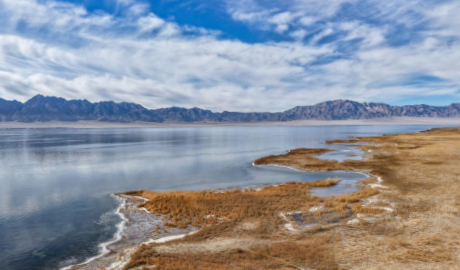
Lakes nurture ecological wetland in Gobi Desert, NW China's Gansu


Students engage in cultural heritage education at Xixia Imperial Tombs archaeological site park
点击右上角![]() 微信好友
微信好友
 朋友圈
朋友圈

请使用浏览器分享功能进行分享
